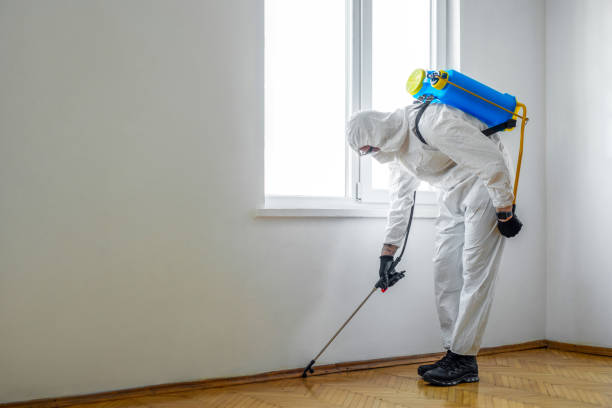The Hidden Dangers of Overlooking Minor Pest Problems in Your Puyallup Home
Picture this scene. You’re enjoying your morning coffee when you spot a single ant crawling across your kitchen counter. Your first instinct might be to simply wipe it away and forget about it. After all, it’s just one tiny ant, right? Unfortunately, this mindset can lead to serious consequences that extend far beyond a minor inconvenience.
Living in Puyallup means dealing with unique environmental factors that make homes particularly attractive to various pests. The region’s mild, wet winters and warm summers create ideal breeding conditions for insects and rodents. When you combine this climate with the lush Pacific Northwest landscape surrounding many homes, you’ve got a recipe for pest activity that homeowners simply cannot ignore.Why Small Problems Become Big Nightmares
The reality about pest infestations is that they never stay small for long. What appears to be a minor issue today can explode into a full-blown infestation within weeks. This is especially true when you’re trying to take care of minor pest issues in your Puyallup home without professional intervention. Many homeowners underestimate just how quickly common household pests can multiply and spread throughout their property.
Consider the reproductive capabilities of common household pests. A single female mouse can produce up to 10 litters per year, with each litter containing 4 to 8 babies. Cockroaches are even more prolific, with some species capable of producing egg cases containing up to 50 offspring. These numbers aren’t meant to frighten you, but rather to illustrate why addressing pest problems early is absolutely critical for maintaining a safe, comfortable home environment.The Silent Destroyers Living in Your Walls
Termites represent one of the most significant threats to Puyallup homeowners, precisely because their damage often goes unnoticed until it becomes severe. These insects feed on cellulose found in wood and paper products, working around the clock to consume the structural elements of your home. The Pacific Northwest’s moisture-rich environment provides ideal conditions for subterranean termites, which build mud tubes to travel between their underground colonies and your home’s wooden structures.
Early warning signs of termite activity include discarded wings near windows and doors, small mud tubes along foundation walls, and hollow-sounding wood when tapped. By the time you notice sagging floors or visible wood damage, termites have likely been active in your home for months or even years. The financial impact can be devastating, with average termite damage repairs costing thousands of dollars.Health Risks That Start Small But Grow Serious
Beyond property damage, pest infestations pose significant health risks to you and your family. Even minor pest problems can introduce harmful bacteria, allergens, and disease-carrying organisms into your living environment. Cockroaches, for example, carry pathogens that can cause food poisoning, dysentery, and allergic reactions. Their droppings and shed skin particles can trigger asthma attacks, particularly in children and elderly family members.
Rodents present their own set of health concerns. Mice and rats contaminate surfaces with their urine and droppings, potentially spreading Salmonella, Hantavirus, and other serious illnesses. They also carry fleas and mites that can bite humans and pets, creating additional discomfort and health complications. What starts as the occasional dropping or scratch in the wall can quickly escalate into a serious public health concern for your household.The True Cost of Procrastination
Many homeowners delay addressing pest issues because they want to avoid the perceived expense of professional treatment. This penny-wise, pound-foolish approach often results in much higher costs down the road. Small infestations require targeted, relatively inexpensive treatments. Large infestations demand comprehensive solutions that may involve multiple treatments, extensive repairs, and even temporary relocation in severe cases.
Property damage from pest activity can significantly impact your home’s value. Termite damage, rodent-chewed wiring, and insect-stained walls all represent red flags for potential buyers. Real estate professionals report that homes with documented pest histories often sell for less than comparable properties, sometimes requiring significant price reductions to attract serious buyers.Structural Damage That Compounds Over Time
The structural integrity of your home depends on pest-free conditions. Carpenter ants excavate galleries in wooden structures, weakening support beams and floor joists. Rodents gnaw through electrical wiring, creating fire hazards that could endanger your family’s safety. Even seemingly harmless insects like carpet beetles can cause extensive damage to natural fiber carpets, clothing, and upholstery.
Foundation damage represents another serious concern. Some ant species, particularly moisture ants common in the Pacific Northwest, excavate soil around foundation walls and can contribute to settling issues. Subterranean termites attack wooden foundation supports, potentially compromising your home’s structural stability over time.Professional Solutions Make the Difference
While hardware store sprays and traps might provide temporary relief, they rarely address the root causes of pest problems. Effective pest management requires identifying the specific species involved, locating their nesting sites, and implementing targeted treatment strategies. Professional pest control technicians have the training, equipment, and materials necessary to eliminate existing infestations and prevent future problems.
Integrated Pest Management approaches combine multiple strategies to achieve long-term success. This might include sealing entry points, eliminating moisture sources, removing food sources, and applying targeted treatments where pests are most active. Regular monitoring and maintenance ensure that your home remains protected year-round.Taking Action Before It’s Too Late
The most effective approach to pest management is prevention combined with early intervention. Regular inspections can identify potential problems before they become serious infestations. Pay attention to warning signs like droppings, unusual sounds, damaged materials, and actual pest sightings.
Don’t let pride or procrastination turn a minor pest issue into a major household crisis. The peace of mind that comes from professional pest management is invaluable, especially when you consider the potential health risks, property damage, and financial costs of untreated infestations. Your family’s safety and your home’s value depend on taking swift, decisive action when pest problems first appear.
Remember that in Puyallup’s unique climate, pest prevention is an ongoing process, not a one-time fix. Seasonal changes bring different pest pressures, and your home’s defenses need to adapt accordingly. Investing in professional pest management services represents smart homeownership that protects your investment and ensures your family’s comfort and safety for years to come.




